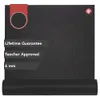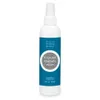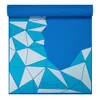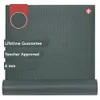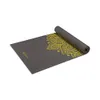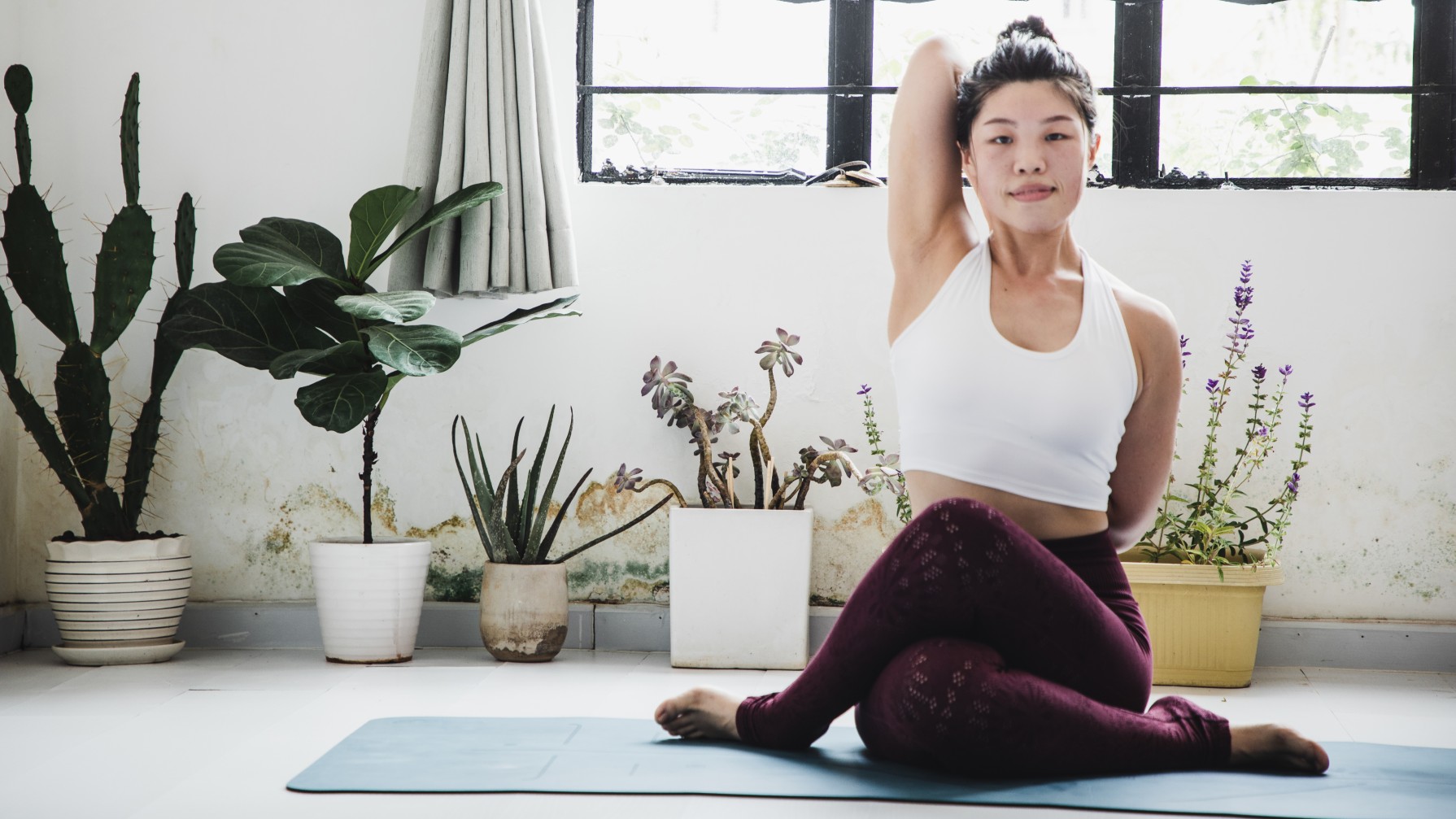
Cow-face pose, or Gomukhasana in Sanskrit, opens the hips and shoulders while stretching the gluteal muscles (your butt). You could focus on just the lower body for a more accessible option, or jump in and try the full-body stretch.
For those who know me, years of weightlifting have left me with extremely tight shoulders, not helped by a rotator cuff problem in my left shoulder. For that reason, mobility and stretching routines have become even more important to me since I hit my 30s and my body began to feel the effects of skipping warm-ups and cool-downs in my 20s.
I now do quite a lot of yoga, and I remembered the cow-face pose from practices over the years. Keen to see if it could help unlock my glutes, hips and shoulders, I practiced it every day, for a week, in the mornings and evenings.
Here’s what to expect from the pose, and whether or not it could help you. All you need for this one is one of the best yoga mats.
What is cow-face pose?
Cow-face involves sitting on your mat, stacking your knees and drawing your heels close to your body, targeting the hips and glutes. Supposedly, the final posture looks like a cow’s face, but personally, I can’t see it. Regardless, it delivers a deep stretch, improves posture and opens the body.
For the full expression of the posture, you’ll then reach one arm overhead and the other behind your back to clasp hands behind you, using your bodyweight or a strap if you have very tight shoulders. You can then swap legs and arms to deliver an even stretch or “symmetry,” as the yogis would say.
How to do the cow-face pose
I’m not a qualified yoga teacher, so I recommend checking out the video below to see the pose in action. However, these are the recommended steps to follow:
Get instant access to breaking news, the hottest reviews, great deals and helpful tips.
- Start seated on your mat, then cross your right leg over your left and bend your knee so that your knees are stacked over each other
- Bring your right heel close to your left hip
- Bend your left knee and bring the heel close to the right hip
- Bed down on the mat and try to relax your hips
- Sit tall through your spine
- Inhale and reach your right arm out to the side, then exhale and bend your arm behind your back, palm facing away from the body and arm tucked close to the body
- Inhale and reach your left arm outward and upward toward the ceiling, palm facing in
- Exhale as you bend your elbow and reach your arm behind your left shoulder, elbow pointed upward
- Try to clasp fingers or hands behind your back
- Try to stay tall as you hold the stretch, pull your elbows back and focus on your breath. On an exhale, release your arms, then your legs, to the starting position
- Switch sides.
Depending on the sequence, your yoga instructor may enter or exit the pose in several ways. You can modify the pose by sitting on a bolster or block to tilt your pelvis and improve alignment, or hold a strap or towel if you’re unable to clasp hands behind you.
Here’s what I learned from trying it for just a minute each morning and evening for a week.
My hips and shoulders felt more open

I opted for 30 seconds per side, twice per day, for one week. My shoulders felt more relaxed immediately afterward, and it helped unlock my hips, too. I felt cow-face pose more in my glutes than my hips, but I’ve always been tighter in the former muscle group, so that made sense to me.
Cow-face targets the outer hips rather than the inner thighs or the flexors, although some people might still feel it down the flexors if they’re super tight. It also targets the glutes and IT band.
The static stretch along the triceps and through the shoulders can also temporarily improve flexibility in the upper body, including the rotator cuff muscles, and I found my lats (the muscles that run down the sides of the back) also felt active during this pose.
I felt (temporarily) taller
The pose is known for its posture-building benefits, encouraging you to sit with a tall spine while stretching out the muscles that aid posture, including your shoulders and upper back. As you hold the stretch, you’ll focus on breathing deeply in and out through the nose while grounding down through the hips.
After each session and just one minute each time, I felt a little bit taller and more open through my thoracic spine.
It was relaxing
Yoga is all about connecting movement and body with breath. Yoga instructors will encourage you to breathe in and out through your nose, expanding the ribcage and stomach as you inhale and softly deflating as you exhale.
I’m still working on breathwork, and I have quite shallow breath, but I did find this pose relaxing, even though my shoulders were screaming at me. Finding calm in the chaos — in this case, a challenging stretch — can increase focus and mindfulness, helping you to feel more relaxed and centered. I certainly did.
My left side was significantly tighter than my right side
The cow-face pose is all about symmetry, and I definitely noticed one side of my body causing more problems than the other, notably my left shoulder, as I couldn’t clasp my hands behind my back when my left arm was on top. I had a resistance band handy, so I opted for that instead.
I also noticed that my knees raised more when my left leg was on top, highlighting an imbalance in my hips that I hadn’t noticed. There’s a lot to think about with your upper and lower body, and because these areas may be tight, posture is often the first to go. I performed the stretch in the mirror to help me stay tall and prevent hunching. Alignment is key!
Cow-face pose: Tips to consider
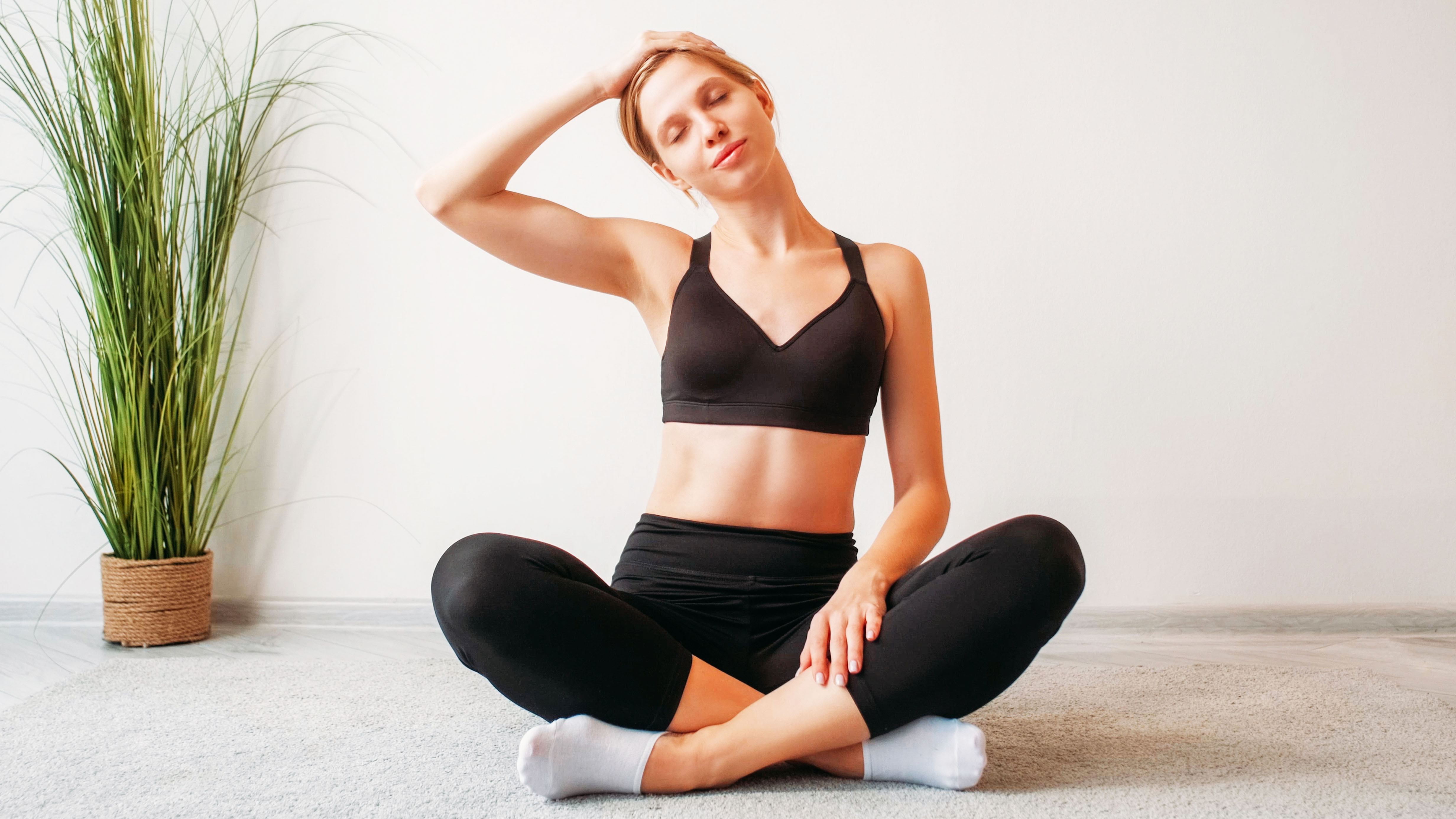
My yoga instructor always tells me to listen to my body; there’s a difference between a pose challenging you and causing pain. For that reason, I sat on the edge of a yoga block on days I felt tighter and used a band when I couldn’t clasp my hands or fingertips together.
It’s also important to speak with a qualified yoga instructor if you haven’t tried a pose before to ensure you are doing it safely and correctly. Your teacher can also advise on modifications and provide tips for alignment. After all, what works for my body might not work for yours.
Finally, I did some digging on the Yoga Journal and found advice recommending sitting on a pillow can help you find a neutral spine, or if this doesn’t work, performing cow-face pose while sitting on a chair.
- Follow Tom's Guide on Google News to get our up-to-date news, how-tos, and reviews in your feeds. Make sure to click the Follow button.
I didn’t take an advanced variation of cow-face, but my yoga instructor advised me to fold forward to help stretch the lower and mid-back while deepening the stretch in the hips and glutes. It’s certainly an option I will try after some more practice.
Overall, I’m relieved I re-found this stretch, and after just one week, I began to see the benefits in my shoulders. While true mobility comes from a range of exercises, particularly ones that move your shoulders through a full range of motion, cow-face pose delivers a delicious amount of uncomfortable intensity for those of us who need to open our hips and shoulders more often, and can be accessible for most people with some tweaks.
More from Tom's Guide
- I just tried these simple hip mobility exercises for hip flexor pain — here’s what happened
- As a personal trainer, these 3 stretches are essential for healthy hips after 40
- Do you find squats uncomfortable? I've ditched stretches for duck walks to build lower-body mobility, strength and stability.
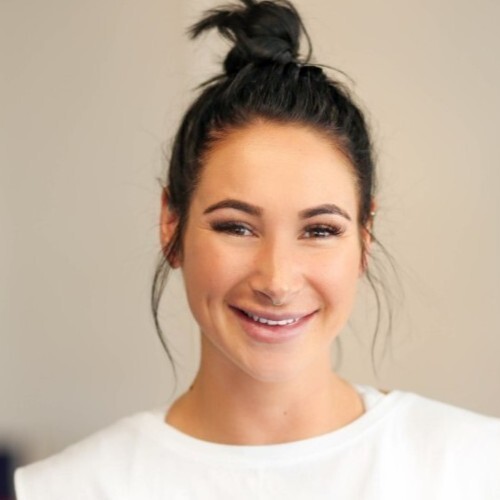
Sam Hopes is a level 3 qualified trainer, a level 2 Reiki practitioner and fitness editor at Tom's Guide. She is also currently undertaking her Yoga For Athletes training course.
Sam has written for various fitness brands and websites over the years and has experience across brands at Future, such as Live Science, Fit&Well, Coach, and T3.
Having coached at fitness studios like F45 and Virgin Active and personal trained, Sam now primarily teaches outdoor bootcamps, bodyweight, calisthenics and kettlebells.
She also coaches mobility and flexibility classes several times a week and believes that true strength comes from a holistic approach to training your body.
Sam has completed two mixed doubles Hyrox competitions in London and the Netherlands and finished her first doubles attempt in 1:11.
You must confirm your public display name before commenting
Please logout and then login again, you will then be prompted to enter your display name.


